Disclosure: This post may contain affiliate links, meaning I get a commission if you decide to make a purchase through my links, at no extra cost to you.
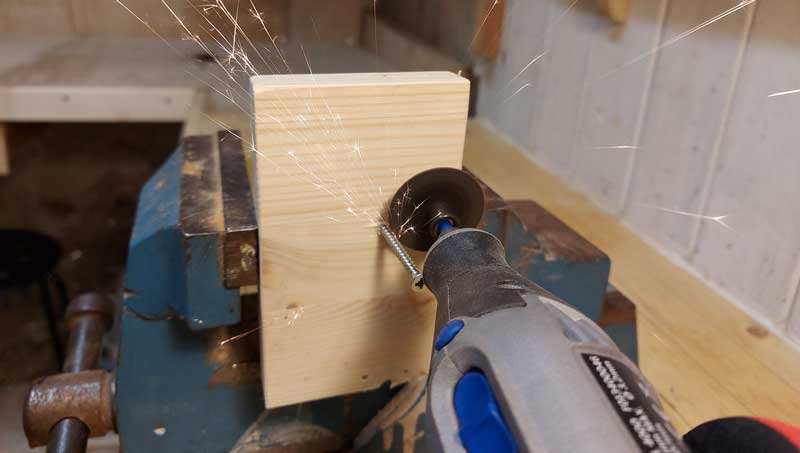
Sometimes, you just have to cut off a screw. Maybe the screw head is broken and stripped, or maybe the screw simply snapped. Either way, in this article I am going to show you how you can use a Dremel to cut off the screw.
To cut a screw with a Dremel you have to use gloves and glasses for protection, choose a powerful Dremel, use the EZ456 reinforced cutting disc, plan the cut, set the RPM to 25000or higher, and start cutting slowly to get a feel for how the Dremel cuts the screw. After the cut, it is important to not touch the screw right away, as it can be very hot.
A Dremel is a great tool to use for cutting small metal objects like screws. You can even get an angled shaft for cutting with the Dremel if the screw sits in an awkward position.
Let me show you, step by step how to cut of a screw with a Dremel
Links To Every Item Mentioned In This Article:
Recommended Dremel: https://amzn.to/3kYzs2m
Recommended Cutting Wheel: https://amzn.to/3qXtcvC
EZ-Lock Mandrel #EZ-402: https://amzn.to/3nCAx1O
Flex-Shaft For Dremel: https://amzn.to/3cwKNSK
Right Angle Attachment: https://amzn.to/3nKnImd
How To Cut A Screw With Your Dremel Or Rotary Tool
1. Use Safety Glasses And Protective Gloves
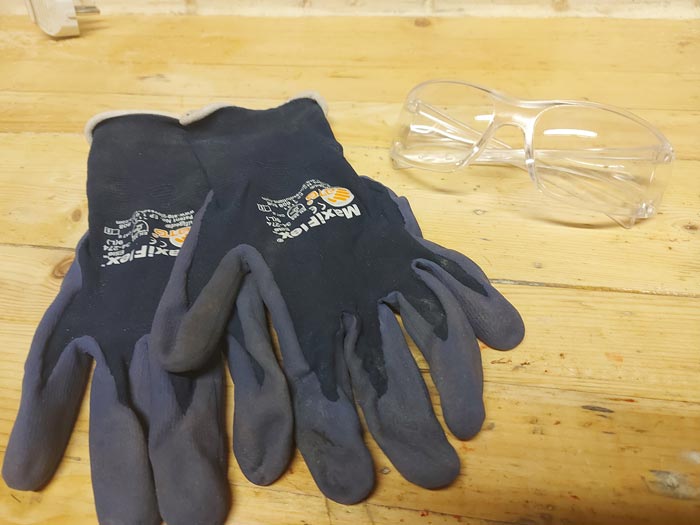
Before doing any cutting, we need to make sure that we are well protected. When cutting anything made of metal with a Dremel, things can happen that you do not expect. The cutting will produce sparks, cutting wheels can break and your tool can slip.
Always use safety glasses when cutting anything with a Dremel. Our eyes are sensitive and even the smallest piece of metal hitting our eyes can do irreversible damage. A face shield can also be used if you want even more protection.
It is also a good idea to use gloves when cutting metal with a Dremel, to protect you from heat, sparks, or accidentally touching something you shouldn’t.
In general, gloves and power tools do not match that well, because the gloves can get caught up in the moving parts of the tool and become a security risk. But when cutting metal with a Dremel, I personally choose to use gloves to protect my hands from sparks and hot metal. Decide what works for you.
A tool like a Dremel might still be able to do some harm if your glove gets caught up in the cutting bit. But it’s not nearly as powerful as something like an angle grinder for example.
2. Use The Right Dremel Tool
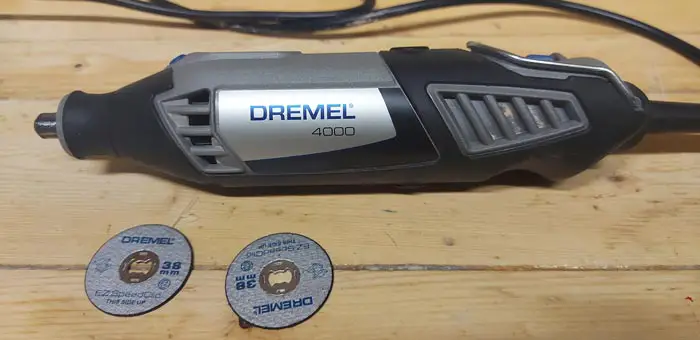
I am using the Dremel Rotary Tool to cut screws. Generally, we want to use the more powerful models when cutting anything made of metal with a Dremel. These are designed to be used with cutting discs and can handle fairly thick screws and pieces of metal.
I recommend using one of these Dremel models when you are cutting Screws:
- Dremel 8260
- Dremel 4000
- Dremel 3000
- Dremel 4300
- Dremel 8220
- Dremel 395
- Dremel 100
- Dremel 200
But if you have any of the weaker models made by Dremel that is made for more hobby and DIY uses like the Dremel Lite or Dremel Stylo+. You can still try to cut the screw, just know it will take a little longer and the motor is more easily overworked.
3. Use A Reinforced Metal Cutting Bit
The best cutting bit to use for cutting screws is the EZ456 reinforced metal cutting bit. This bit is safe and reliable to use, it cuts well and you can cut a whole lot of screws with it before you need a new one. The reinforced metal cutting bit is used in conjunction with the SC402 EZ-lock mandrel, which makes changing cutting wheels a breeze.
You can also use the cheaper and smaller cutting wheels/discs to cut screws with a Dremel, but I prefer to use the reinforced one. The smaller and thinner cutting wheels have a tendency to shatter while cutting and that becomes an extra danger. The thinner cutting wheel cut faster because they have to remove less material.
The largest screw a Dremel can cut through has a shank diameter of 2/3-inch (1.7 Cm). Cutting a screw this large with your Dremel will be hard on the motor and wear out the cutting wheel fairly quickly.
4. Secure, Mark And Plan The Cut
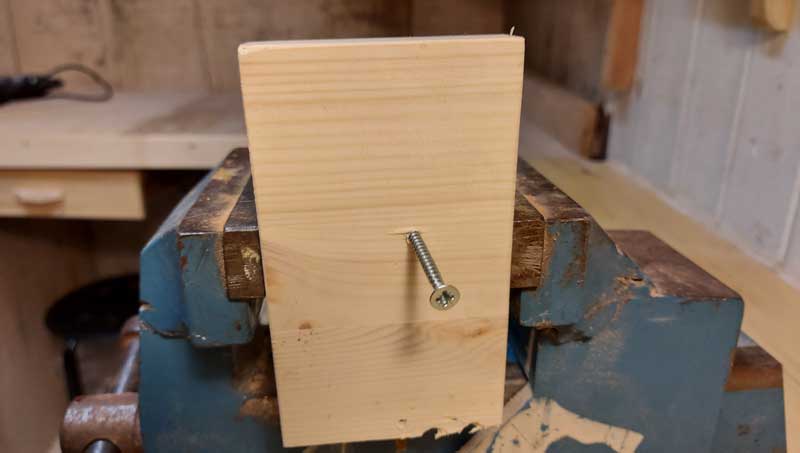
It is always a good idea to have a plan of how you will do the cut before you actually start cutting. What direction are you cutting, are you cutting the screw flush with the surface, or do you need to make a mark as a reference guide to help you with the cut.
If the screw is tightened in something loose, like a small piece of wood, it might be a good idea to secure the piece of wood in a vise so you don’t have to focus on the wood or object moving when cutting.
Every screw is different, and some cuts may require different approaches.
Now, I do not mean that you have to make a complete step-by-step plan before cutting, just make sure you know how you are going to cut the screw and what your plan is before you start the cut.
5. Set The RPM From 25000 to 35000
High speeds are your friend when cutting screws and metal in general. Set the RPM to anywhere from 25000 to 35000 RPMs before doing the cut. Alternatively, start at a lower RPM and increase as you get more comfortable with cutting.
High RPMs might make the metal overheat if you apply too much pressure. But since the screw we are cutting will not be reused or repurposed, we do not have to worry about overheating.
6. Turn On The Dremel
Now we are ready to turn on the Dremel. Plugin the cord, keep a steady hand and turn on the Dremel.
7. Slowly Start The Cut

It is important to keep a steady hand when starting the cut. Keep a tight grip around your Dremel and slowly make contact between the spinning cutting disc and the metal screw. Just try to get a feel for how the tool cuts the metal, and how it behaves.
When you start cutting there will be some sparks that come flying out in the direction of the cut (unless you are cutting aluminum). This is normal and mostly harmless, just make sure that these sparks are not hitting any flammable materials. Like a gasoline tank for example.
These sparks are metal debris that gets overheated when cut by the cutting wheel
Do not use too much pressure or force when cutting the screw, use some force but let the bit and tool do most of the work.
When cutting screws, the cutting discs sometimes grips the metal and does a little “jump”, you might feel that you lose control over the tool. This is normal, and as long as you keep a steady hand you should be fine. It will happen less and less as you get a feel of how to cut screws with a Dremel.
8. Finish The Cut
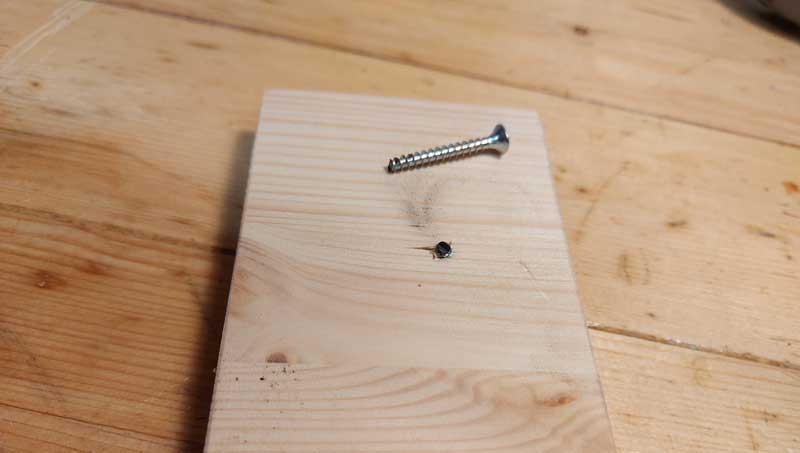
A Dremel can handle cutting most screws. If the screw has a large shank, it can become a challenge, but you can cut around the shank and go at it from many sides to make it easier.
The getting close to finishing the cut, it is a good idea to reduce the pressure so that the can keep control of your tool when the screw comes off.
9. Let The Metal Cool Down
When doing a cut like this, the metal has experienced a lot of friction. This makes the metal very hot and can burn your skin if touched. Even if you are wearing gloves, you should at least wait a minute before touching any metal parts close to the cut.
10. Is The Screw In A Tight Space?
Sometimes, the screw that we want to cut is in a hard-to-reach place or sits in an awkward position. And even if the Dremel is a relatively small tool, it can be hard to get it in the right position to cut the screw. We have two options here.
The Right Angle Attachment – The right-angle attachment makes the cutting disc cut parallel to the shaft of the Dremel. This gives you the ability to fit the Dremel into a more cramped space when cutting.
The Flex Shaft – The flex shaft is an “extendable shaft” for your Dremel. Since the flex shaft does not contain a motor as the Dremel does, it can be a lot smaller. The flex shaft will fit in the palm of your hand and can be used in the smallest of spaces.
11. Now You Know How To Cut A Screw With A Dremel
That is basically the way you cut a screw with a Dremel. A Dremel is a great tool for cutting small metal objects like screws, and the small cutting discs that the Dremel offers are perfect for this.
And don’t be afraid to try cutting thicker pieces of metal with the Dremel, it can handle fairly thick bolts as well.





